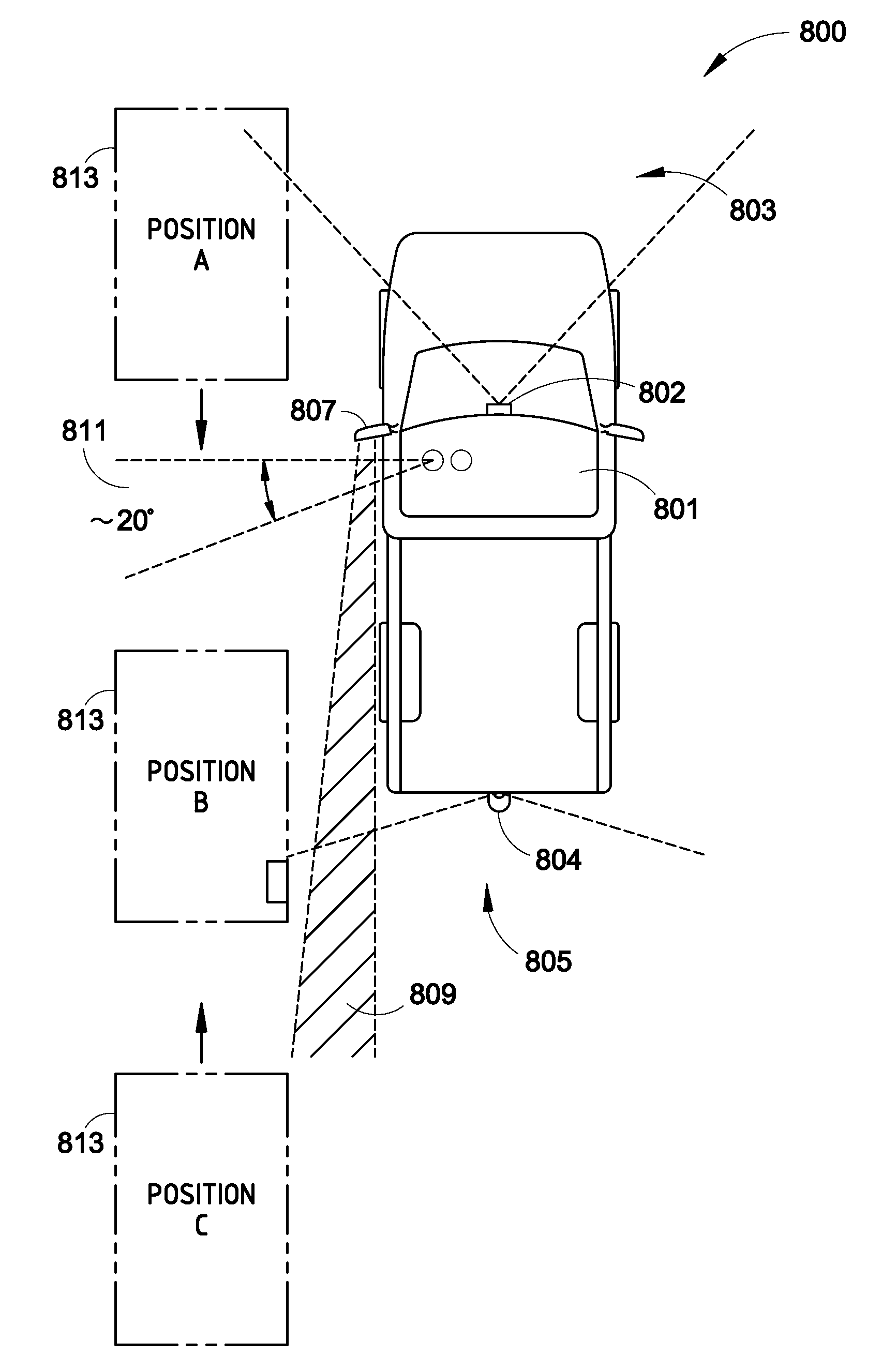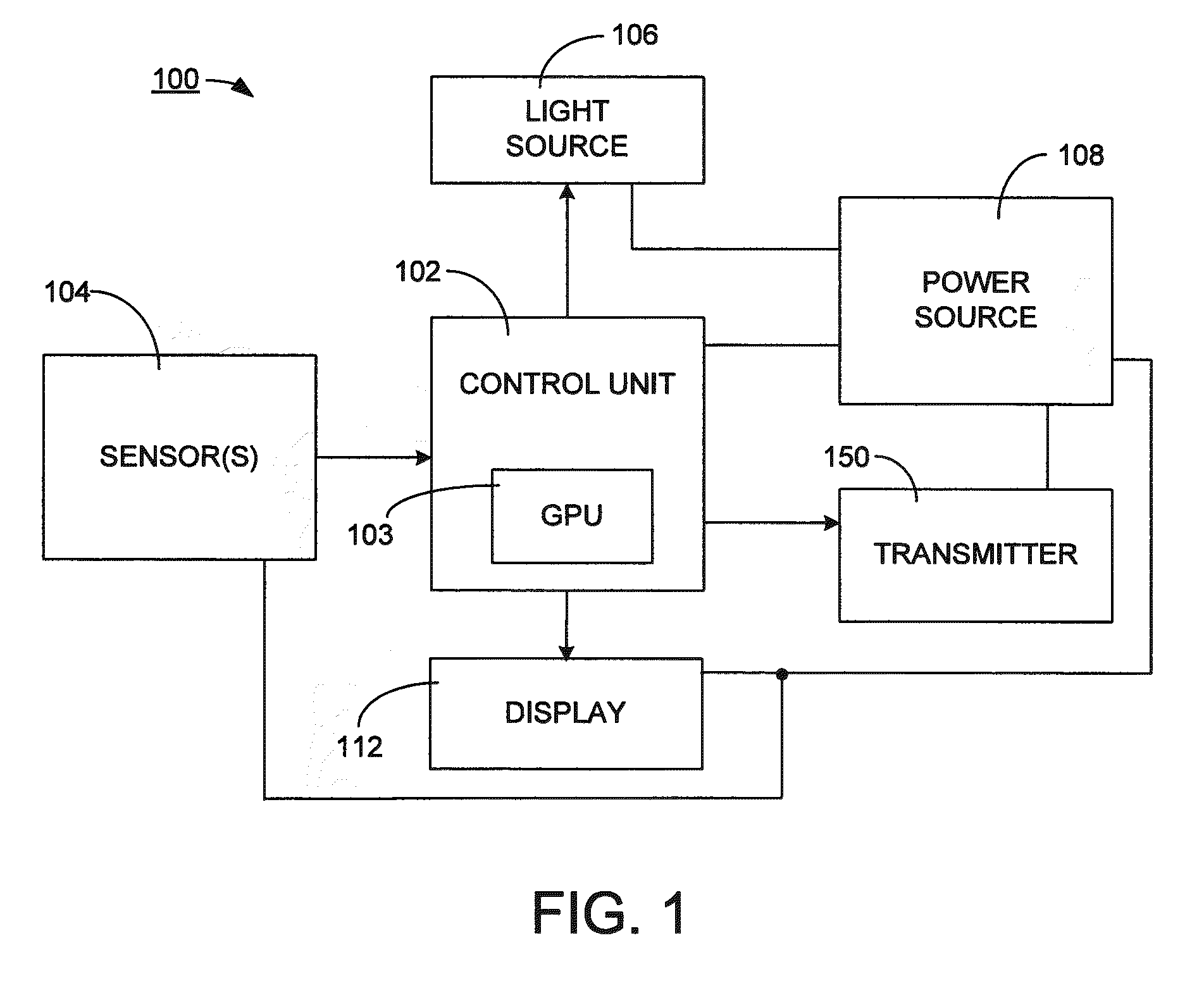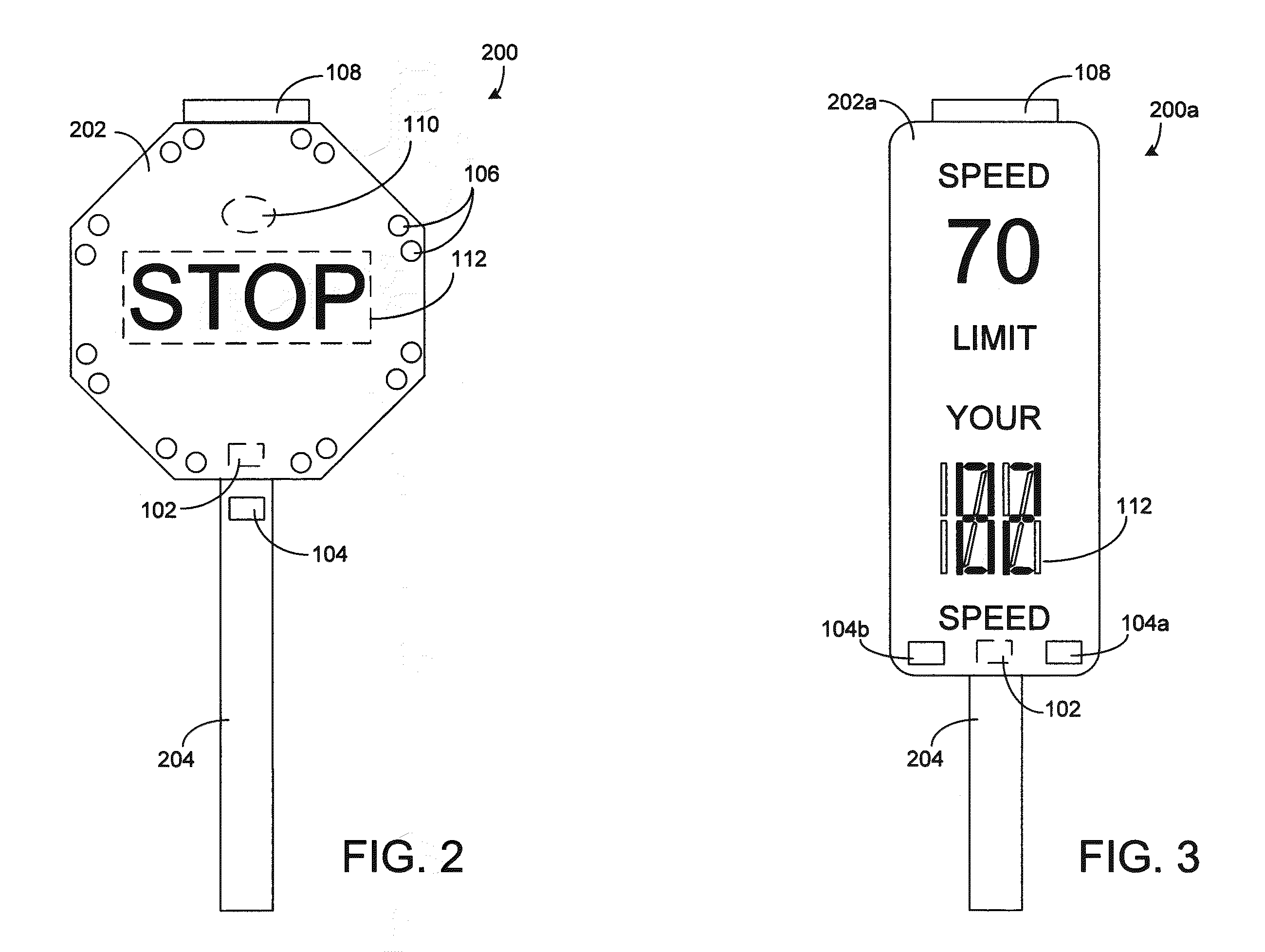Blind spot detection system and method using preexisting vehicular imaging devices
a technology of preexisting vehicles and blind spots, applied in the field of vehicular blind spots detection, can solve problems such as complex systems and retrofitting to existing vehicles
- Summary
- Abstract
- Description
- Claims
- Application Information
AI Technical Summary
Benefits of technology
Problems solved by technology
Method used
Image
Examples
Embodiment Construction
[0013]In the implementation of any traffic system, a designer must generally contend with issues of economics and environment. Mass-produced intelligent interactive vehicular signage has the potential to make a two-stop sign intersection nearly as safe as a conventional traffic light, which may cost fifty times as much, with less wasted time of drivers at the intersection, less wasted gasoline and less driver frustration. Seen another way, mass-produced interactive signs with intelligence can cost effectively be used in ten to one hundred times more locations as conventional signs and signals, potentially saving tens of thousands of lives and hundreds of thousands of injuries and vehicular collisions.
[0014]According to one embodiment of the present invention, a driver approaching a sign is not alerted if their vehicle is performing in accordance with the sign. If, for instance, a driver's speed is within prescribed limits and a sensor indicates that a vehicle is slowing properly for...
PUM
 Login to View More
Login to View More Abstract
Description
Claims
Application Information
 Login to View More
Login to View More - R&D
- Intellectual Property
- Life Sciences
- Materials
- Tech Scout
- Unparalleled Data Quality
- Higher Quality Content
- 60% Fewer Hallucinations
Browse by: Latest US Patents, China's latest patents, Technical Efficacy Thesaurus, Application Domain, Technology Topic, Popular Technical Reports.
© 2025 PatSnap. All rights reserved.Legal|Privacy policy|Modern Slavery Act Transparency Statement|Sitemap|About US| Contact US: help@patsnap.com



